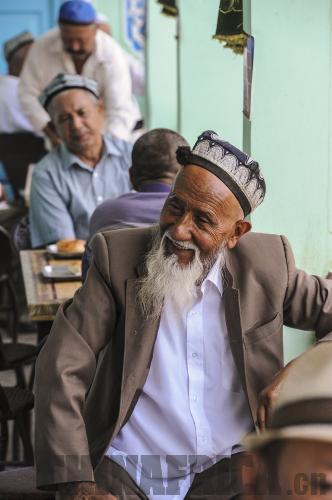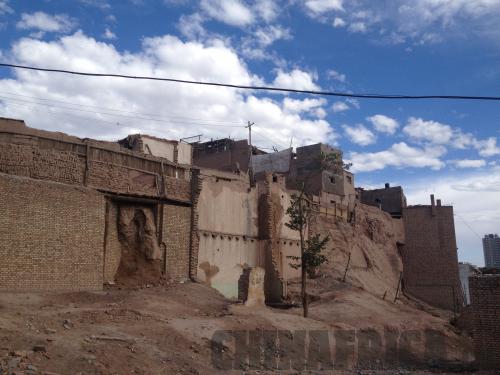|
 |
|
Locals enjoy tea in old Kashgar (SHEN QIAO) |
Called "the best-preserved example of a traditional Islamic city to be found anywhere in Central Asia" by American architect and historian George Michell, the old city of Kashgar is a vital cultural intersection on the historic Silk Road in the remote west of China's Xinjiang Uygur Autonomous Region.
Michell made this observation in his 2008 book Kashgar: Oasis City on China's Old Silk Road. Before him, German-Swiss film director Marc Forster made similar remarks concerning his decision to film Kite Runner (2007) in Kashgar instead of Afghanistan, where the story was set.
Sand-colored houses, women dressed in various kinds of hijab, and men in robes and skullcaps - all of this makes Kashgar stand out as different from many other places in China. More than 95 percent of Kashgar's residents are of non-Han ethnicity, whereas people of minority ethnicities comprise less than half of the population in the regional capital of Urumqi. It is said that without traveling to Kashgar, you cannot say you have really been to Xinjiang.
Much of the architecture in the old city remains as it was 2,000 years ago when Uygur people settled in Kashgar. More than 126,800 people call the 4.25-square-km area home.
 |
|
Centuries old houses are a feature of Kashgar's old city (YUAN YUAN) |
Long old life
Skyscrapers and old houses see each other across a single street in Kashgar. A ferris wheel in an amusement park opposite the old city demarcates an apparent boundary, but the screams of parkgoers riding rollercoasters drift into the old town from time to time.
Kashgar's old city can be divided into two parts - one, packed with workshops, vendors, cafes and restaurants, has been tidily renovated. New developments with Uygur characteristics have emerged since 2009, and bazaars have been reorganized according to types of wares: hats, food and musical instruments, to name a few categories.
The residential buildings are as they were, built at higher altitudes normally two or three stories tall and built of mud and wood, with beautifully carved ceilings. The original support structures have remained unchanged for centuries, and many houses have been passed down through families for seven or eight generations.
Each house has a courtyard, some big and some small. Similarly, all the yards feature trees and flowers favored by Muslims, such as mulberry, fig, pomegranate, almond, grape and roses. The yards are heavily shaded, providing a tranquil environment for relaxation. Larger yards feature pergolas for grape vines.
To walk through the narrow lanes of the old city is to walk into living history. Craftswomen stitch traditional four-cornered doppa caps. Girls with cropped hair wearing bright frocks and mismatched plastic sandals giggle and shove one another, then sing and dance for their audience. The real pleasure here is to wander and watch.
Amago Rajim, a 58-year-old woman, has been living in a two-story house for 40 years. She can see skyscrapers and the amusement park from her living room. "The view is spectacular from the window and we get plenty of sunshine," said Rajim. "The neighbors are all long-time friends and we know each other pretty well. Living here is very happy."
Every weekend, their four children and seven grandchildren visit the home inherited from her in-laws. "We also have an apartment in a modern building in Kashgar and we go there to spend winter as the winter here is very cold," said Rajim, who revealed that people need to burn coal themselves to keep warm. "Both my husband and I have tracheitis so we cannot stay here in winter."
Thirteen-year-old Akada has been here for eight years. "The neighbors are very friendly and we have known each other for a long time, so it feels very good and safe," said Akada, who lives with his parents and grandparents in a two-story home. "I want to live here forever."
|